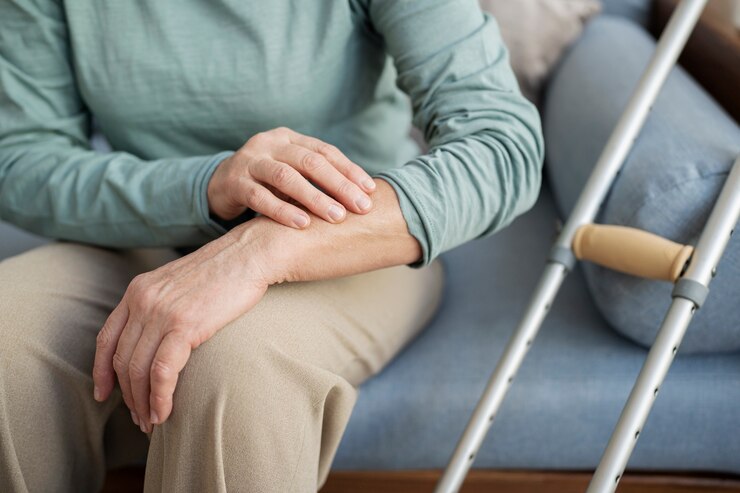Parkinson’s disease is a progressive neurological disorder that affects millions of people worldwide. The degeneration of dopamine-producing neurons in the brain causes Parkinson’s disease, resulting in symptoms such as tremors, rigidity, and difficulty with movement and coordination. While there is currently no cure for Parkinson’s disease, early diagnosis is critical in managing symptoms, slowing disease progression, and improving the overall quality of life.
Degenerative brain diseases like Parkinson’s are extremely common overall, ranking second among those caused by ageing. Additionally, it is the most common motor (movement-related) brain disease. Globally, at least 1% of people over 60 suffer from this condition. As a result of similarities with other movement-related disorders, diagnosis in the early stage is difficult. Early symptoms of Parkinson’s disease are often vague and non-specific, which may cause a person to avoid seeking medical care. Efficient examination, early diagnosis and treatment of Parkinson’s Disease thus play a great role in saving us from disability.

Common symptoms of Parkinson’s disease are as follows:
Parkinson’s causes slowed movements. The symptoms are described as muscle weakness, but there is no actual loss of strength, as the problem is caused by muscle control problems.
1. Resting tremor is a type of involuntary muscle movement characterized by rhythmic shaking that occurs when the muscles are not in use. It is observed in approximately 80% of cases of Parkinson’s disease. It should be noted that resting tremors are distinct from essential tremors, which generally do not occur when the muscles are at rest.
 2. Loss of facial muscle control can also lead to drooling, as well as a mask-like facial expression known as hypomimia, where facial expressions barely change or not at all.
2. Loss of facial muscle control can also lead to drooling, as well as a mask-like facial expression known as hypomimia, where facial expressions barely change or not at all.
3. Parkinson’s disease commonly exhibits symptoms of lead-pipe rigidity and cogwheel stiffness. Lead-pipe rigidity refers to a state of consistent and unchanging stiffness when moving a body part. On the other hand, cogwheel stiffness arises when both tremors and lead-pipe rigidity are present, and the movements appear jerky and stop-and-go, hence the name.
4. The slowed movements and stiffness that arise from Parkinson’s disease often result in a stooped or hunched-over posture, which tends to become more pronounced as the disease progresses. One can observe this posture when a person walks, as they typically take shorter, shuffling strides and move their arms less. Turning while walking may also take more steps than usual.
5. A loss of control over facial muscles causes reduced blinking frequency, which is another symptom of Parkinson’s disease.
6. Micrographia, or cramped and small handwriting, is another symptom that occurs due to muscle control problems.
7. Reduced throat muscle control can cause difficulty in swallowing (dysphagia), increasing the risk of pneumonia or choking|
8. Finally, Parkinson’s disease may also cause an unusually soft speaking voice (hypophonia), resulting from reduced muscle control in the throat and chest.
The Importance of Early Diagnosis
Parkinson’s disease is a chronic, progressive disorder that affects the nervous system. As such, early diagnosis is critical to managing the symptoms of the disease and preserving a patient’s quality of life. In the early stages of Parkinson’s disease, patients may experience mild tremors, stiffness, and difficulty with balance and movement. There are chances for the symptoms to mislead as other conditions, this cause delay in diagnosis and treatment.
Following are the most significant benefits of early diagnosis is that –
1. It allows patients to receive treatment earlier in the disease process. Medications and other therapies can help manage symptoms and slow the progression of the disease. This can help patients maintain their independence, mobility, and overall quality of life for longer.
2. It can help patients and their families plan for the future. Parkinson’s disease is a progressive disorder, and as it progresses, patients may require increasing levels of care and support. Early diagnosis allows patients and their families to prepare for these changes and make important decisions about their future care.
3. Provides an opportunity for patients to participate in clinical trials and research studies. These studies are critical to advancing our understanding of Parkinson’s disease and developing new treatments. By participating in these studies, patients can contribute to the development of new therapies and potentially benefit from early access to promising treatments.
Challenges to Early Diagnosis
Despite the importance of early diagnosis, there are several challenges to diagnosing Parkinson’s disease in its early stages.
● One of the biggest challenges is that the early symptoms of Parkinson’s disease can be subtle and easily overlooked. Many patients may attribute these symptoms to normal ageing or other conditions, delaying diagnosis and treatment.
● Another challenge is that there is currently no single test or diagnostic tool for Parkinson’s disease. Diagnosis is typically based on a combination of clinical evaluation, medical history, and physical examination. This can make it difficult to diagnose the disease in its early stages, when symptoms may be mild and non-specific.
Conclusion
Parkinson’s disease is a progressive neurological disorder that affects millions of people worldwide. While there is currently no cure for Parkinson’s disease, early diagnosis is critical in managing symptoms, slowing disease progression, and improving the overall quality of life. Early diagnosis allows patients to receive treatment earlier in the disease process, plan for the future, and participate in clinical trials and research studies. However, diagnosing Parkinson’s disease in its early stages poses several challenges, and researchers need to conduct more studies to develop better diagnostic tools and enhance early detection.
Ayurvedic treatment for Parkinson’s disease is an effective treatment approach as this manage the symptoms of the disease by natural ways. Raha Ayurveda provides the best ayurvedic treatment for Parkinson’s disease by individualized treatment approaches for each body constitution. Our experienced Ayurvedic professionals will help you recover better through authentic Ayurvedic treatments.
Leave a Reply